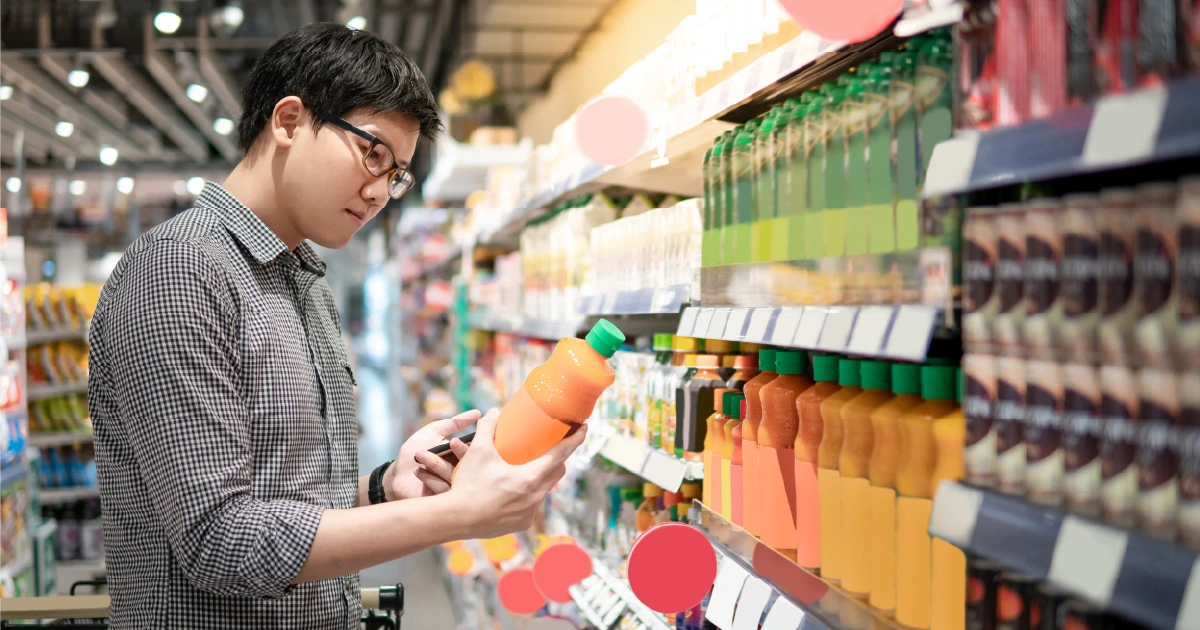
Will your CPG promotional spending continue to underperform in the current environment?
In the past couple of years, promotional activities have been reduced when compared to 2019. Even if the size of the drop was different, the range was between 1% and 5%, and the trend was the same for all categories and regions.
But from the beginning of 2022, there has been pressure to increase promotion frequency and depth. Two main reasons for this:
- On the shopper side, the end of restrictions has brought back baskets, composition and purchase behaviors similar to the pre-pandemic period in spite of important differences that we will discuss later.
- On the retailer side, promotions are seen as an important lever to mitigate price increases due to inflation.
Avoid a “force quit”
For Consumer Product Manufacturing companies like yours, promotions should not be just a restart of doing things the old way. This approach will surely backfire.
And for the most part, promotions don’t provide even short or medium benefits at the category level. So, there’s no reason to restart exactly from where you left off a couple of years ago, however, there is an opportunity to try something different. Setting a new promotional plan cannot be an exercise handled by relying on some macros in Excel as most manufacturers do.
Take the journey in stages to promotional excellence
Defining an innovative and winning strategy requires the right tools to:
- Forecast baseline volumes and understand all the impact coming from the polarization of consumption that the post pandemic era has consigned us to. Polarization has been driven from one side by the demand for premium products because of the persistence of “In-Home” consumption and, on the other side, by the demand for low price products from families that have seen their buying power decrease during the lock-down.
- Identify the causal factors which drive additional volumes and values in promotions. In particular, understanding the differences in performance coming from different combinations of promotional tactics, products and retailers. And discovering changes in the post pandemic world, where shoppers go to stores more prepared and more determined to stick to the “shopping list” created upfront. So, promotional tactics such as ads which intercept shoppers during the preparation of the “shopping list” have gained effectiveness when compared to deal offerings which tend to influence the shopper while in the store.
Plan at category level. Change is a combination of exercises. Small or large innovations must produce a positive impact. Consider tactics that can recruit new consumers or increase the consumption of existing ones like trials or promotions on small pack-sizes. This will drive benefit for the entire category and potentially to your portfolio. By placing TPRs (Temporary Price Reductions) on smaller pack sizes or by giving out samples, there is a low cost and low risk to both the manufacturer and the retailer alike.
True, promotion optimization is not an easy path. But it is neither impossible nor too long before you will experience the initial benefits.
5 best practices to achieve faster results:
- Define the playground. Optimization doesn’t have to cover the entire spectrum of clients and products. Focus on the more relevant ones in term of actual contribution and potential growth.
- Don’t be (too) afraid of data. Sure, data availability is crucial but most of what is required to start is now available. It is mainly a matter of data cleansing, correction and enriching. And proper tools can help to overcome these issues.
- Start small. It does not have to be an “all or nothing” game. Understanding actual base volumes, comprehending post event results, forecasting baseline, simulating change in a few promotions per client are all intermediate steps that will deliver immediate, actionable and valuable insights.
- Move incrementally. An agile approach is the best way to address this kind of initiative. Take the time to learn, evolve and adjust direction while you benefit from the intermediate steps.
- People matter. Always align the skills of the team to the new way of working.
Business benefits will come along with the voyage
First, as reductions on operational costs (an average of 10%), second, as a reduction in the promotional spending index (an average 3%) and finally, as an improvement in the effectiveness of promotional investment (an average of 5%).
To keep doing the Same As Last Year (SALY) plan is now impossible. Let’s turn this into an opportunity to strengthen your position in the market.

